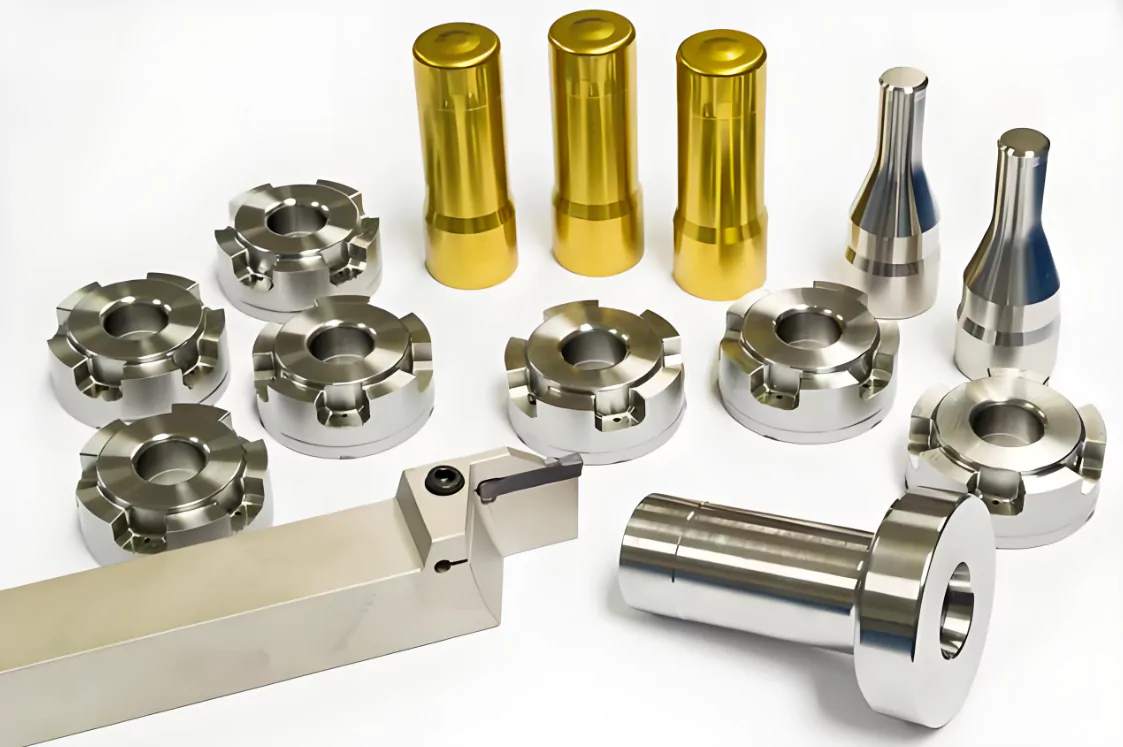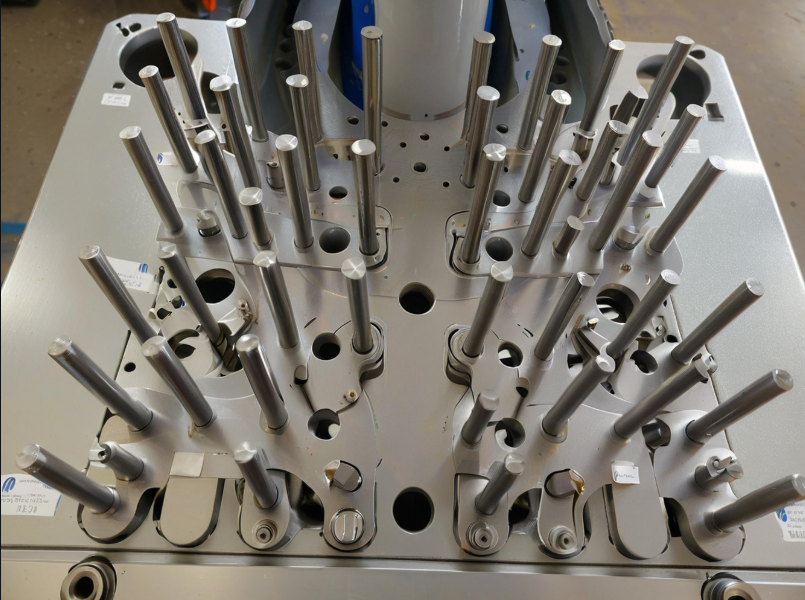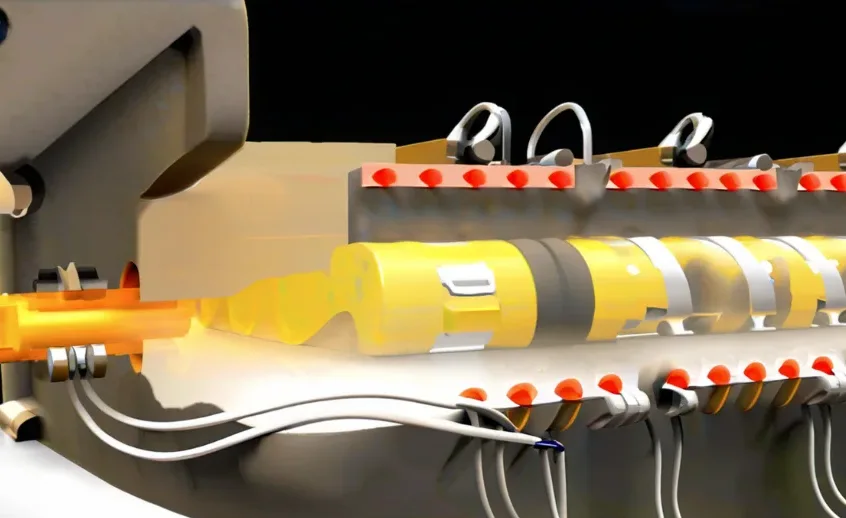Table of Contents
Due to various reasons such as funding, world-leading equipment, and cutting tools are often beyond the reach of general enterprises. They need to address the issues of low equipment level, weak process control, and poor surface quality, which no longer meet the precision and intelligence requirements of modern machinery.
To improve the processing quality and precision of metal parts, it is urgent to apply CNC technology to optimize the process.
This article analyzes the concept and principles of CNC technology, explores the challenges in precision metal parts processing, and suggests strategies for using CNC to upgrade processes, offering guidance for improving mechanical metal parts processing in enterprises.
Concept and principle
CNC technology is an automation system that uses computer and servo technology to control machine tools through programmed digital instructions. It compiles CNC codes with process information, loads them into the control system, and the system interprets and executes these instructions to control the machine’s movement and complete tasks.
The CNC technology system mainly comprises three parts: CNC equipment, actuators, and feedback devices. CNC equipment acts as the “brain,” storing instruction codes, while actuators are the “limbs,” converting control signals into mechanical movement. The feedback device serves as the “perception” system, providing real-time movement feedback to ensure processing accuracy.
Compared to traditional processing, CNC technology improves metal parts precision by an order of magnitude, with surface roughness Ra reaching 0.1 μm. This is due to the CNC system’s ability to continuously adjust parameters like spindle speed and feed rate, and dynamically control the tool-workpiece position.
For example, when turning a linkage surface, the spindle speed follows a sine la and the feed rate changes according to an exponential law through CNC programming. This precise control, difficult to achieve with traditional methods, ensures the shape, position tolerance, and surface quality of the parts.
Another major advantage of the CNC system is the real-time monitoring of the machining process. Modern CNC systems integrate sensors to detect parameters like spindle power, nozzle temperature, and vibration acceleration online.
Table 1 lists the typical functional modules and functions of CNC systems.

Current status and problems
1. Low level of machining equipment
The general precision machining industry for metal parts faces the problems of equipment shortage and backward technology. Some enterprises still use machine tools and cutting tools from the 1980s with low automation, insufficient rigidity, and spindle runout (radial and axial) greater than 15 μm. The positioning repeatability of the engraving machine is less than 0.01 mm, which seriously restricts the machining quality.
It is difficult for these backward equipment to achieve precise control of cutting parameters in precision machining. For spherical grinding, the grinding wheel’s linear speed should remain constant to ensure uniform material removal.
Due to the large positioning error and poor transmission rigidity of some low-level linkage mechanisms, the grinding wheel’s linear speed fluctuates, causing uneven heat-affected zones and surface defects.
The accuracy of feedback components such as grating rulers and capacitive sensors makes it difficult to reach the micron or even nanometer level, which seriously restricts the effect of position and speed loop control.
The closed-loop bandwidth is also generally less than 100 Hz, making it difficult to achieve high dynamic response. When machining complex 3D surfaces, the limitations of CNC system interpolation and control functions cause a significant deviation between the actual and ideal motion trajectories, affecting the surface shape and position accuracy.
2. Weak control capability of the machining process
Real-time monitoring and control are crucial to ensure machining quality in the process of precision machining of metal parts. Due to limitations in sensor technology, most small and medium-sized machining companies rely on operator experience for setting process parameters, resulting in variable machining quality.
Even CNC machining faces similar problems. CNC turning machining ideally requires closed-loop control of spindle power, vibration, and tool wear. However, most solutions use open-loop control, setting cutting speed based on experience without real-time optimization.
Another prominent problem is the low level of automation and imperfect auxiliary facilities. A large number of operations still rely on manual labor, such as measurement, clamping, tool replacement, etc. This not only reduces efficiency but also increases the risk of quality problems caused by human factors. The absence of effective systems like temperature control, cleaning, and dust protection makes machining vulnerable to environmental changes.
Metal chips and cutting fluid splashes can contaminate optical components, while dust can cause electro-corrosion in electrical terminals, leading to product defects. Over 50% of machine tool quality issues are due to environmental conditions and human factors.
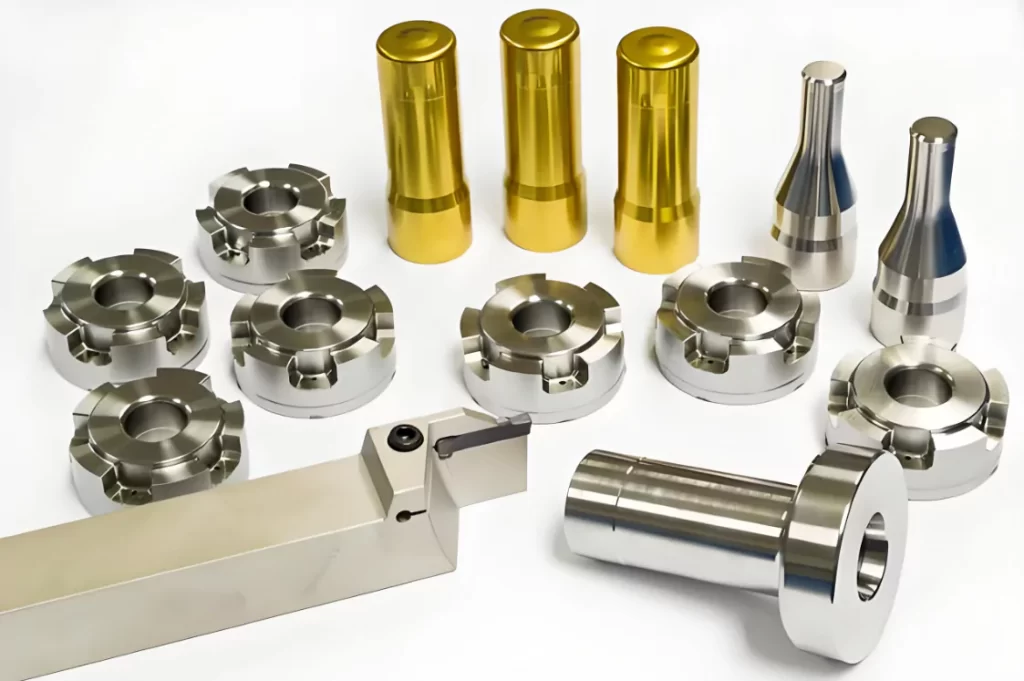
3. Tool performance makes it difficult to meet processing requirements
Tool performance is one of the key factors that determine the quality of precision machining of metal parts. Ordinary carbide tools have a high cost-effectiveness, but poor edge sharpness and wear resistance. For precision boring, the processing length of a standard carbide boring head is under 50 mm, with a drilling-to-grinding ratio of only 100–200.
The drilling and grinding ratio of advanced microcrystalline carbide and diamond boring heads can reach 300-500, with a single hole processing length over 80 mm, directly affecting the deep countersinking quality of metal parts. Another obvious shortcoming is the large geometric error of the tool. This is mainly due to the limited process control capability of the air flotation method to produce carbide substrates.
Ordinary carbide drills typically have an axial runout ≥50 μm and radial runout ≥35 μm, making it difficult to meet IT7-IT8 precision standards. In contrast, leading companies use precision pressure control technology to achieve axial runout control within 20 μm.
At present, carbide conical spiral drill bits can only achieve a three-slot opening structure at most. Some leading tool manufacturers have achieved a six-slot design, enhancing blade strength and extending tool life.
In addition, the surface of general tools only has simple traditional hard coatings such as TiN and TiCN. These coatings are mainly used to improve wear resistance, and the improvement of welding resistance is not obvious. The newly developed composite gradient jet coating (FGST) technology can achieve significant welding resistance. With the application of FGST-coated tools, the cutting speed of high-speed milling steel can be increased by 2 times. This coating technology is extremely rare in general companies.
4. Surface quality is difficult to guarantee
The surface quality of metal parts is difficult to guarantee, mainly reflected in the following three aspects:
First, the background environment has large vibration and noise. Most factory workshops have poor environmental conditions, and equipment operation and road traffic vibration interference are serious. This will be transmitted to the tool contact area through the machine tool foundation and processing system. Actual measurements show that ground vibration in ordinary workshops reaches 50–80 m/s², while stress excitation during high-speed milling exceeds 100 m/s², far surpassing the allowable range for precision equipment.
Strong vibration can cause intermittent tool contact, creating periodic dents on the workpiece surface and preventing a smooth finish. Additionally, background noise, like air compressor sounds, can interfere with acoustic emission sensors, making monitoring ineffective.
Second, chip formation and outflow are blocked. During high-speed and high-efficiency processing, a large number of high-temperature long chips accumulate in the cutting area. Chips not discharged in time will pass through the tool again, causing deep pits on the workpiece surface, especially in spherical grinding.
Studies show that improper chip blank shapes can cause intermittent chip splashing, damaging the machined surface finish.
Third, there are insufficient online quality detection and control methods. Many metal-cutting workshops lack online quality detection and control systems, unlike digital workshops in developed countries.
Most measurements of finish, roughness, and dimensional errors are still done manually offline, which is inefficient and unreliable. This prevents closed-loop control of the machining process, making it hard to detect and correct surface defects in time, requiring repeated processing and rework.
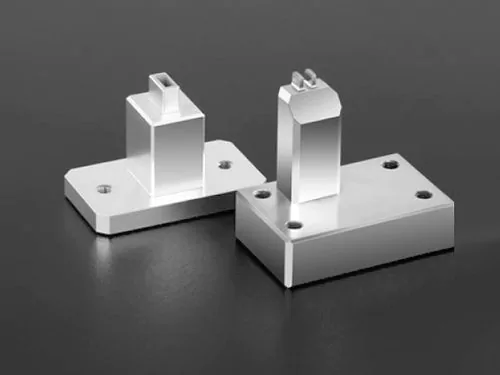
Strategy for optimizing precision machining of metal parts using CNC technology
1. Use high-end CNC machine tools to improve machining accuracy
The accuracy of CNC machine tools directly determines part machining quality. Upgrading CNC machine tools is the primary strategy to improve the level of metal parts machining equipment.
The focus should be on advancing R&D and introducing high-end equipment like horizontal machining centers, compound machines, and five-axis CNCs. These new machines, with fully digital control systems, outperform traditional tools in positioning accuracy, repeatability, and stiffness.
The positioning repeatability accuracy of Sharp’s newly developed 5-axis horizontal milling machine reaches 2 μm, meeting high-speed, high-efficiency machining requirements. Additionally, CNC machine tools optimize the spindle drive, feed drive, and control system integration, reducing error superposition between components.
In terms of control, the new generation of CNC systems has high-speed and high-precision motion control capabilities. Mainstream CNC systems offer 0.5 ms interpolation cycles and 500 Hz position loop bandwidth for precise spindle speed and position tracking.
This fast-response control system suppresses axis coupling vibrations, ensures dynamic stiffness, and supports high-efficiency processing. In addition, the modeling and interpolation of the workpiece’s starting position and motion trajectory are becoming more and more accurate. Improved polynomial interpolation boosts contour trajectory control accuracy by over 30%, replacing traditional linear interpolation.
High-precision trajectory control ensures the workpiece geometry and surface quality meet design requirements, while integrated sensors provide real-time feedback to maintain machining stability.
Modern CNC machine tools can use sensors like acoustic emission for tool wear, power sensors for cutting resistance, and vibration sensors for abnormal vibrations. If values exceed preset limits, the CNC system automatically adjusts, such as by limiting cutting depth or using intermittent cutting to reduce risk. This closed-loop monitoring and control based on multiple sensors reliably ensures the safety and stability of the machining process.
2. Use a CNC system to realize closed-loop control of the machining process
The upgrade of CNC systems’ software and hardware is key to optimizing process control. High-end CNC systems now use advanced process models and multi-sensor data fusion algorithms to predict conditions like cutting force, chip shape, and tool wear, enabling accurate calculation of optimal cutting parameters for process optimization.
The system dynamically adjusts spindle speed and feed rate based on real-time cutting resistance to maintain target cutting force, prevent overload, and ensure stability. This closed-loop control reduces surface roughness from Ra3.2 μm to Ra1.6 μm.
In addition, the introduction of additive manufacturing technology provides the possibility for the functional expansion of CNC systems. Modern CNC systems can be equipped with additive equipment for metal and non-metal materials. Based on the optimization results, laser cladding or additive methods are chosen to create a functional gradient layer on the workpiece surface, replacing traditional machining.
This integrated method regulates surface structure and properties, enabling non-destructive processing and surface enhancement. For example, laser cladding of WxC or TiC particles boosts the surface hardness and wear resistance of aluminum alloys, offering a cost-effective alternative to electroplating or spraying.
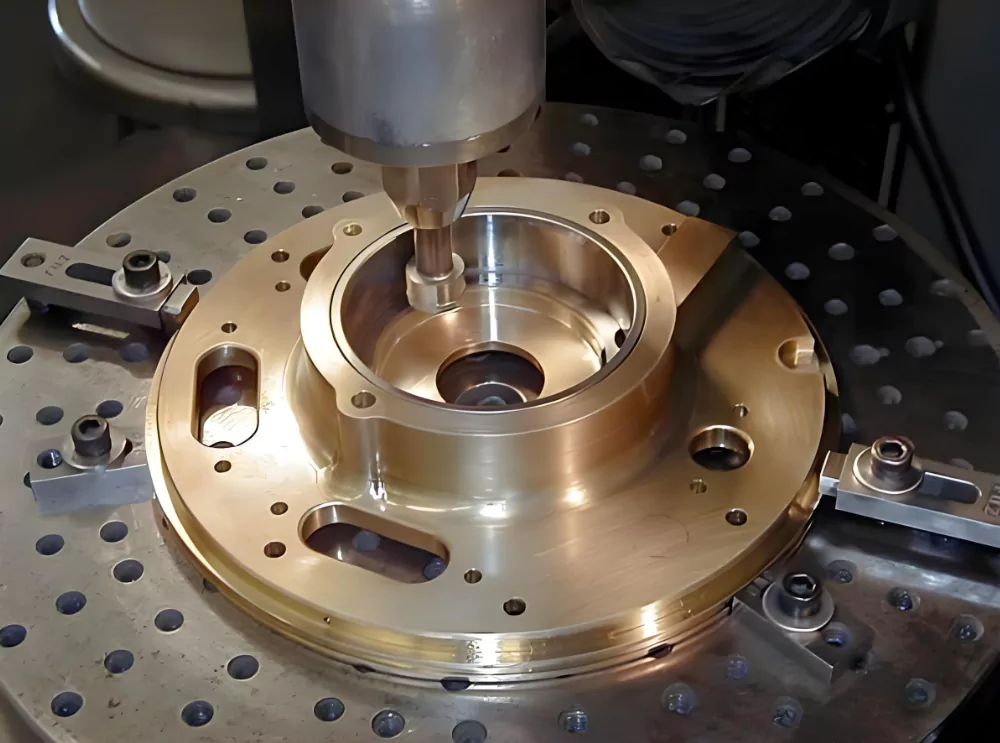
3. Development of high-performance CNC cutting tools
As a “tool” in the metal cutting process, the performance of the tool directly affects the processing quality. High-speed and high-efficiency CNC machining places higher requirements on the performance indicators of the tool. Therefore, it is urgent to develop special high-performance tools based on the characteristics of the CNC machining process.
A key focus is customized tools, designed based on objective needs and subjective habits. Tool features like dimensions, blade shape, and coating are tailored to the workpiece material, cutting parameters, and operator preferences.
Such “exclusive customization” can maximize the performance of the tool and improve the efficiency of CNC machining. Customized tools can improve processing efficiency by over 15% without requiring operator skill adaptation or experience.
Thin film cutting tools use methods like physical vapor deposition to apply superhard films on substrates, enhancing surface hardness and heat resistance. Ceramic films like aluminum nitride (AlN) and silicon carbide (SiC) offer high wear resistance and chemical inertness at temperatures up to 1,000°C.
Aluminum nitride film tools increase cutting speed by 200% and tool life by 300% in high-speed machining, greatly improving efficiency. These high-performance CNC tools will drive intelligent manufacturing and the transformation of the metal-cutting industry.
4. Integrated CNC technology to achieve online surface treatment
The workpiece surface quality directly affects part performance and is a key indicator of processing quality. Therefore, the integration and optimization of surface treatment using CNC technology is an important way to ensure surface quality. Specifically, the CNC system can be used to effectively control online testing and composite processing to ensure surface quality.
Laser speckle detection is used to measure surface roughness and residual stress. The feedback is input into the CNC system, which dynamically adjusts the processing strategy to eliminate defects. If excessive residual stress is detected, the system automatically applies rolling or low-stress grinding to correct the issue.
This online regulation based on sensor feedback reliably optimizes surface quality. Digital closed-loop control enhances system autonomy, reduces rework and manual intervention, and allows the CNC system to integrate multiple surface treatments by controlling process and head switching.
Typical composite technology integration includes:
1) High-speed boring or turning is used to shape the matrix contour, followed by electrolytic grinding to eliminate surface stress.
2) The small-angle flat hob is automatically replaced to achieve micro-nano surface hardening and smoothing after wire cutting or rolling.
3) First, DQ precision forging is used for the basic shape, followed by surface material performance gradient design via laser cladding.
This in-situ process conversion mode shortens production time and improves surface quality, embodying digital design and manufacturing concepts in metal processing, making it worth promoting.
Conclusion
The innovative use of CNC technology by enterprises is key to achieving industry intelligence.
High-precision CNC machine tools improve processing accuracy, while CNC system monitoring and optimization ensure precise control. Customized thin-film tools address new machining needs, and integrated laser additives revolutionize surface quality.
With the rapid development of CNC equipment, metal parts processing companies, particularly in aviation manufacturing, will quickly transition from traditional to CNC processing.
This will enhance product accuracy and performance while driving the industry’s intelligent transformation.
The future focus will remain on innovating and applying CNC technology to enhance enterprise competitiveness.
FAQ
What are the critical factors affecting precision machining accuracy?
Factors include machine rigidity, tool selection, material properties, thermal stability, cutting speed, and operator expertise.
How can I improve the surface finish of machined metal parts?
Use high-quality cutting tools, optimize feed rates and cutting speeds, and ensure proper lubrication and cooling during the process.
What role does tool maintenance play in precision machining?
Regular tool inspection and maintenance reduce wear and tear, ensuring consistent cutting performance and dimensional accuracy.
How does material selection influence machining precision?
The hardness, tensile strength, and thermal properties of the material affect tool wear, cutting force, and machining tolerances.
What strategies can minimize thermal distortion during machining?
Use coolants effectively, minimize heat generation through optimized cutting parameters, and machine in controlled environments to maintain thermal stability.
How can CNC programming improve machining precision?
Implementing precise toolpath programming, using advanced simulation software, and reducing manual inputs can enhance accuracy and repeatability.
What quality control methods ensure machining precision?
Employ methods like CMM (Coordinate Measuring Machines), laser scanning, and in-process measurement systems to monitor and verify part dimensions.
What machining techniques are best for achieving tight tolerances?
Techniques such as fine turning, grinding, honing, and electrical discharge machining (EDM) are effective for high-precision requirements.
How can vibration be reduced during precision machining?
Use vibration-damping materials, secure workpieces with high-quality fixtures, and balance cutting tools properly to minimize vibration.
What role does operator skill play in achieving machining precision?
Skilled operators can optimize machine settings, troubleshoot issues, and make real-time adjustments, which are crucial for maintaining high precision.

